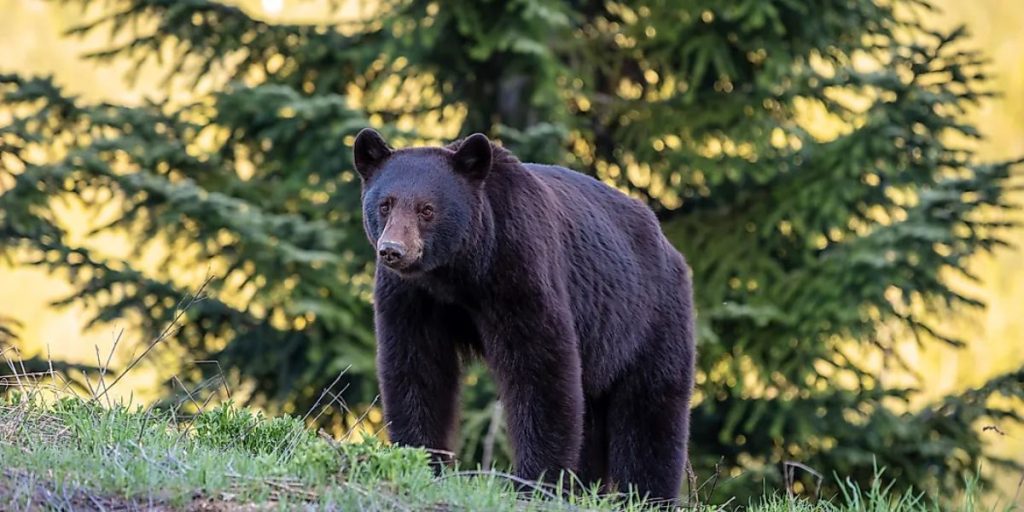Explore the untamed wilderness of Maryland, a state where the serene scenery conceals a hidden realm of deadly fauna. Amidst the picturesque outside, a captivating assortment of creatures linger, demanding both vigilance and respect. From elusive predators to unexpectedly fearless animals, this list reveals the most formidable residents of the Old Line State—and expands the concept of “deadly” to encompass those who dominate the food chain, even if they do not necessarily target humans.
Eastern Copperhead Snake
The eastern copperhead snake is a highly poisonous pit-viper known for its exceptional stealth and strategic agility. Geographically distributed along the eastern coast of the United States, this serpent is commonly observed in Maryland, where its bites are seldom fatal but yet have a significant impact. The copperhead is identifiable by its tan color and prominent hourglass markings. Its wide head and penetrating gaze elicit considerable attention. Although the venom of these snakes is somewhat weak in comparison to other vipers, it is important not to be deceived.
These snakes are highly sophisticated hunters who selectively use their poison on unsuspecting victims. When they do inflict a bite on humans, it is typically a ‘dry bite,’ a cautionary shot with minimal or no venom injection. However, it is crucial not to take any risks—a bite from the eastern copperhead necessitates prompt medical intervention! Given its prevalence as the primary cause of treated snake bites in the United States, the eastern copperhead should not be overlooked.
Tennessee’s Hidden Hazards: Meet the State’s Top 5 Most Dangerous Animals
The Black Widow Spider
Introducing the black widow spider, the most poisonous arachnid in Maryland and a legendary creature in the domain of spiders. This iconic and notorious spider is characterized by its streamlined, black body and distinctive hourglass form. Nevertheless, the unethical image that the black widow has acquired serves as a protective strategy in its own right: this spider is a timid and non-hostile creature, only striking when its web is upset.
Yet, when it does, exercise caution! The venom of this snake is up to 15 times more powerful than rattlesnake venom, making it a highly deadly bite that demands significant respect. Remarkably, adult humans who become targets of its fangs frequently survive without any injuries, without experiencing any severe repercussions or even mortality. Nevertheless, it is crucial to comprehend that a bite from a black widow need medical intervention. When face with this enigmatic enchantress with eight legs, it is advisable to exercise prudence.
6 Dangerous Animals Flying in Oregon’s Skies That Can Kill You
Black Bear

Deep inside the dense woodlands of Maryland, a formidable behemoth roams, skillfully combining immense strength with astute ingenuity. The black bear is the greatest predator in Maryland, a formidable presence whose substantial size and power can unleash immense rage. The weight of adults can reach up to 500 lbs and their lengths can extend up to 6 ft; their wide shoulders and well-developed muscles serve as evidence of their unwavering presence.
Their streamlined, ebony coats shine in the sunlight, sometimes accentuated with a V-shaped white insignia on their chest. Although these awe-inspiring predators often avoid human interactions, they will not hesitate to establish their supremacy if they feel threatened or if their offspring are in danger. Although they mostly inhabit the woodland areas of Western Maryland, they have also been observed to explore human-inhabited regions in pursuit of food.
By its unique combination of power and shrewdness, the black bear serves as a poignant reminder that even in the most unforeseen locations, the wild essence of Maryland’s environment lingers, ready to be confronted.
Snapping Turtle
The deep waters of Maryland harbor a reptile with formidable jaws capable of inflicting a severe bite, which can result in human scarring and increased susceptibility to lethal diseases. The common snapping turtle is a colossal creature found in Maryland’s wetlands, exerting control over ponds, rivers, and swamps with a formidable hand, its supremacy unquestioned as it feeds on unsuspecting fish, insects, and even little mammals.
Characterised by its rough, moss-covered shell and sharp, beady eyes, this old creature has an almost prehistoric appearance. Its coarse, scaly covering acts as durable protection as it remains submerged in the water. When faced with this violent turtle, one should exercise extreme caution: snapping turtles are more formidable adversaries than timid escapees, erupting into a biting frenzy that can be catastrophic for those who are not prepared.
An optimal observation of the common snapping turtle, a primordial predator, is achieved by maintaining a safe distance while exploring the hydrological ecosystems of Maryland.
These 6 Dangerous Animals Are Invading Florida
Coyote
Undoubtedly, the wild coyote is the most astute and versatile predator in the Maryland ecology. These untamed canines flourish not just in densely populated, forested agricultural regions but also in metropolitan and suburban settings, presenting dangers to small domesticated animals and sometime humans.
Characterised by its slim physique, elongated ears, and drooping tail, this opportunistic predator moves in groups with synchronised assaults aimed at disarming and perplexing unaware prey. With urban expansion encroaching on their native habitats, coyotes are being observed more frequently in city areas, resulting in more frequent incidences of human-wildlife interactions.
During periods of food scarcity, coyotes exhibit increased levels of boldness, therefore eliciting dread and alarm among the local inhabitants. Given the coyote’s ultra-acute instincts, people must enhance their own instincts by adopting prudence and mindfulness while interacting with these territorial dogs.
Conclusion
The ecology of Maryland is characterized by a rich variety of fauna, some of which necessitate our reverence and prudence. While venomous snakes, spiders, and disease-carrying ticks and mosquitos do present some dangers, many other species, such as black bears and coyotes, typically live together with humans.
Gaining knowledge and admiration for these species enables the secure appreciation of the state’s stunning natural landscapes. The inherent untamed nature of Maryland can be fully appreciated while giving utmost importance to the well-being of the individuals and animals that coexist therein.